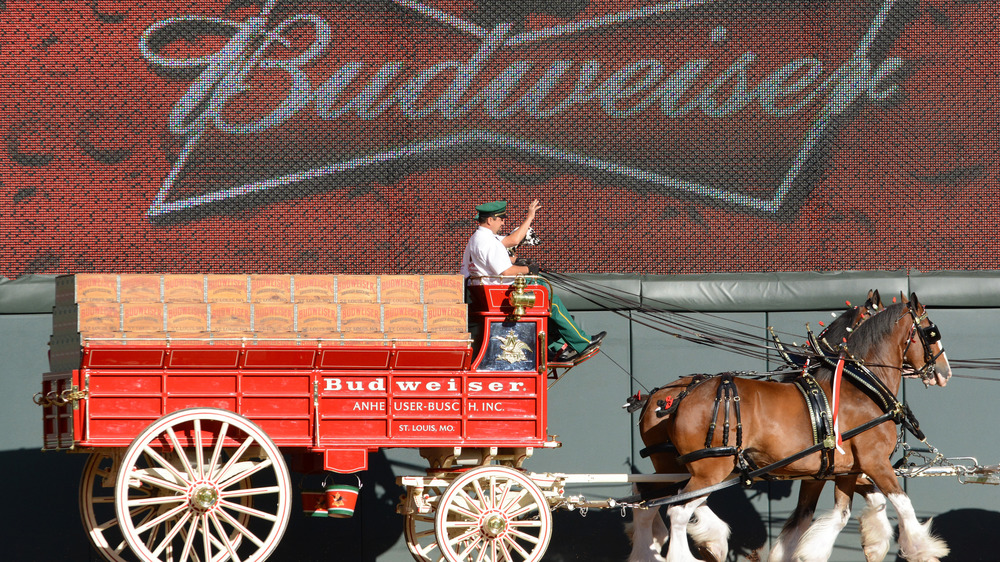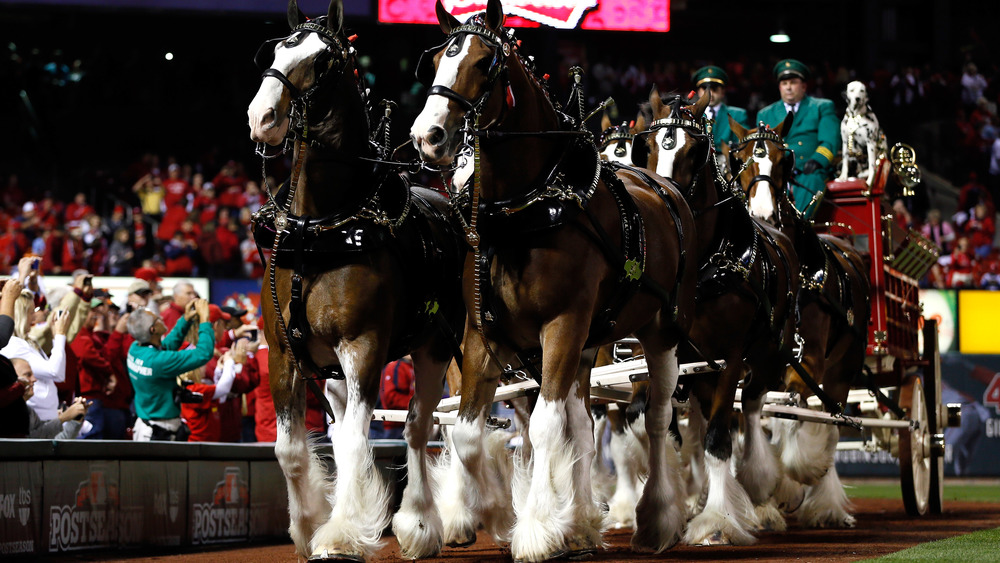The History Of The Budweiser Clydesdales Explained
The Budweiser Clydesdales are some of the more well-known and beloved mascots in the history of advertising. The ubiquitous sight of the gleaming, towering teams of horses pulling wagons full of Budweiser beer in commercials that air during the Super Bowl and at major sporting events continues to impress and delight. How did these iconic equines come to such prominence? Per the Spectator Tribune, the original Budweiser Clydesdales came from Manitoba, Canada, and started out as the property of McDonagh & Shea's brewery. In 1933, Patrick Shea sold the team of six horses to August A. Busch Jr. Alongside his brother Adolphus Busch III, Busch Jr. presented them to their father August A. Busch Sr. of the Anheuser-Busch company in St. Louis, Missouri, to celebrate the end of Prohibition, during which the sale and consumption of alcohol was illegal in the United States.
As reported by the Anheuser-Busch website, the company knew a good marketing gimmick when they saw it and soon arranged for a second team of six horses to make their way to New York, where the team clip-clopped to the Empire State Building. They drew the attention of thousands of bystanders and delivered a case of Budweiser to former governor and anti-Prohibition activist Alfred E. Smith. The stunt was so popular that the team of Clydesdales went on a tour of New England and the mid-Atlantic region, eventually making their way to Washington, D.C., to deliver another case of Budweiser, this time to President Franklin D. Roosevelt.
Budweiser Clydesdales have a very specific look
Since 1950, the standard team or "hitch" size has been eight, not six, horses and each hitch has its own accompanying Dalmatian mascot. Over 70 Clydesdales live and breed at Warm Springs Ranch in Boonville, Missouri. Traveling hitches who make their way to events around the country and appear in advertising are based in Saint Louis, Missouri; Merrimack, New Hampshire; and Fort Collins, Colorado. The official home in Saint Louis is "an ornate brick and stained-glass stable built in 1885" on the Anheuser-Busch campus, per Athens Plus.
Budweiser Clydesdales have specific physical requirements they must possess in order to be a part of a hitch. They must be at least 18 hands (or 6 feet) tall, at least 4 years old, weigh between 1,800 and 2,300 pounds, and have the standard look of the instantly recognizable Clydesdale, including "a bay coat, four white stockings, a blaze of white on the face, a black mane and a black tail." In order to drive a hitch, applicants must be able to control a combined 12 tons of weight between the wagon and the horses while holding 40 pounds of reins, which when combined with the tension of the horses pulling comes out to 75 pounds. This takes particular strength and skill, and drivers must complete a long training course before becoming official Budweiser Clydesdale Hitch Drivers.

